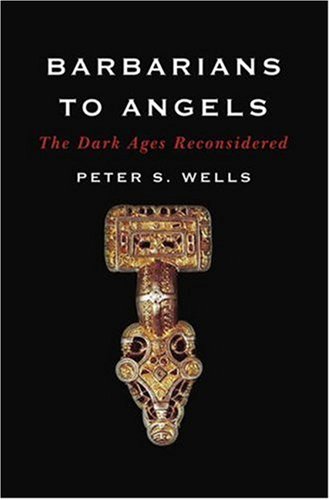Barbarians to Angels
 Peter S. Wells’ book Barbarians to Angels is a look at the Dark Ages in the ‘cultural continuity’ tradition that started in the 1970s. It is mostly aimed at dispelling the extremely bleak view of post-Roman history taken by the early Humanists to Gibbon and through most of the twentieth century..
Peter S. Wells’ book Barbarians to Angels is a look at the Dark Ages in the ‘cultural continuity’ tradition that started in the 1970s. It is mostly aimed at dispelling the extremely bleak view of post-Roman history taken by the early Humanists to Gibbon and through most of the twentieth century..
And it’s a certainty that things weren’t as bad as they represented them. However, the arguments presented that the post-Roman world continued without major disruptions are often nebulous, ill-supported, and lacking any degree of detail.
The strongest assertions are with the continuance with cities. The older view generally asserts that post-Roman cities were abandoned, or greatly reduced in size. Wells talks about what archaeology has found in several cities throughout Europe that show these cities did not show in disruption in the post-Roman era, as well as several sites outside the Roman world that developed in this time frame. However, one city did indeed shrink massively in this period (Rome itself), and there’s no discussion of if there are any cities from that period where there has been a conspicuous absence of any meaningful finds. Absence of evidence is not evidence of absence, but the comparison would provide a useful baseline for better theorizing.
Still, archaeology is the best parts of the book, and I wish he had gone into more detail about what has been found. New finds are made all the time, and this book does touch on several more recent ones. I think a more systematic examination would have helped develop his argument much better. As it is, he shows that there were new sites, outside the Roman world (in the Baltics) that were developing, and trading. And while that does support his refrain that Europe did not turn into a howling wilderness, it does speak to the potential of large economic shifts, which would disrupt ordinary life.
Moreover, Wells asserts at one point that the finds of exotic luxury goods in graves and the like disproves that trade declined in the post-Roman period. No, it only shows that luxury goods continued to be traded; it says nothing about bulk non-luxury goods, the part that only sees trade when there is a well-established infrastructure in place.
In the end, I suppose I was expecting a more scholarly work, while this is really a very introductory text. It is also aimed at traditional rut of learning about the period, which is not where I am. It’s not a bad book, but not what I’m looking for.

Discussion ¬